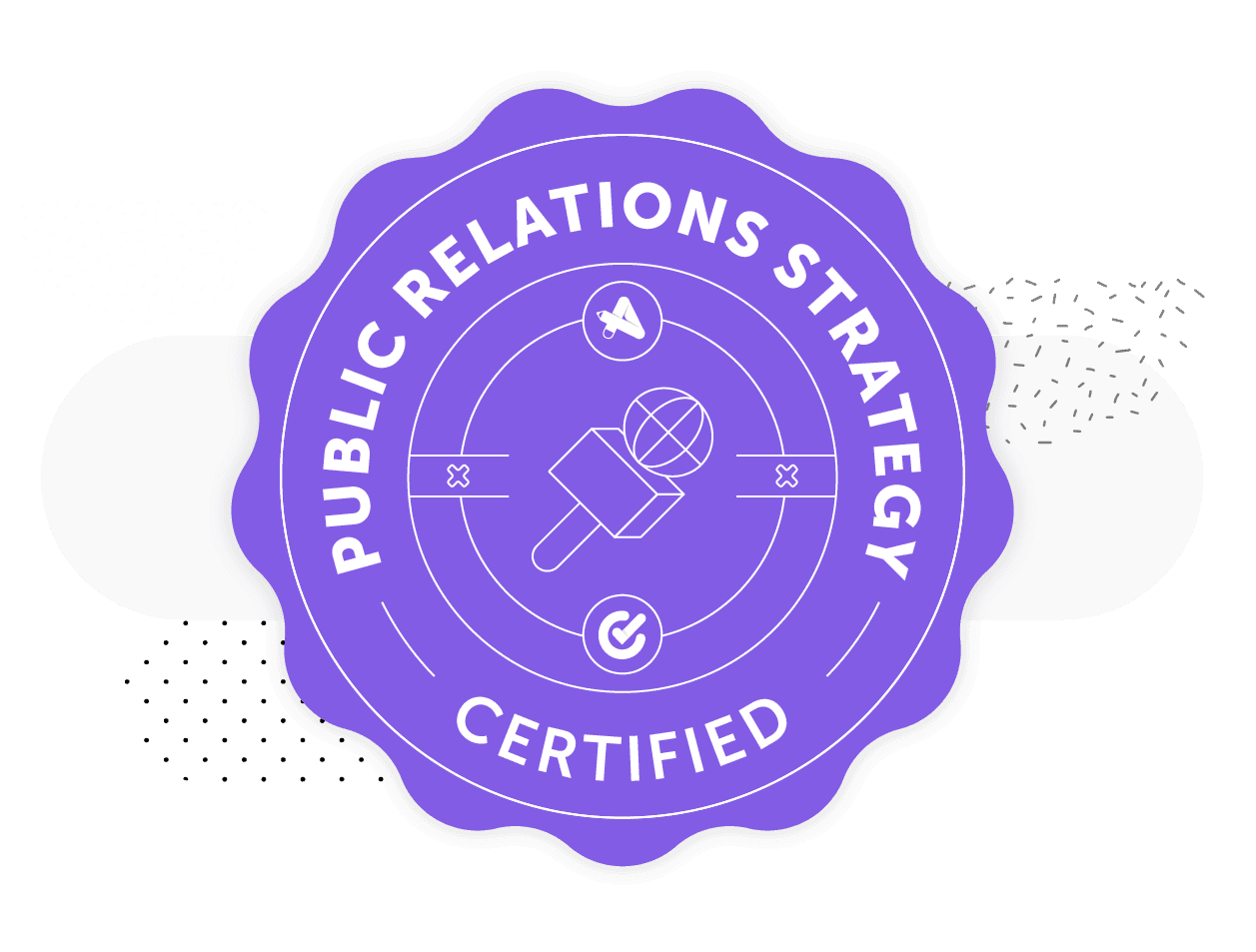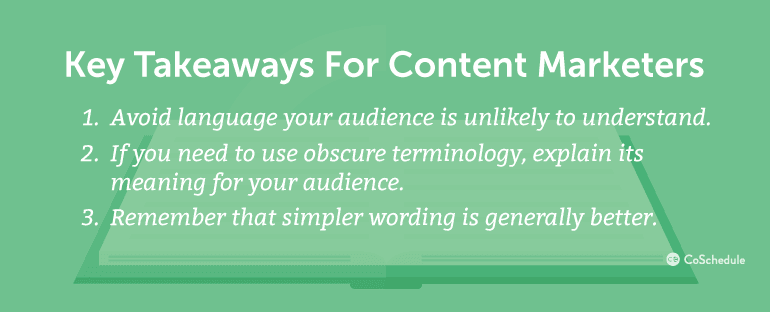How To Write Like A Journalist To Be A Better Marketing Storyteller
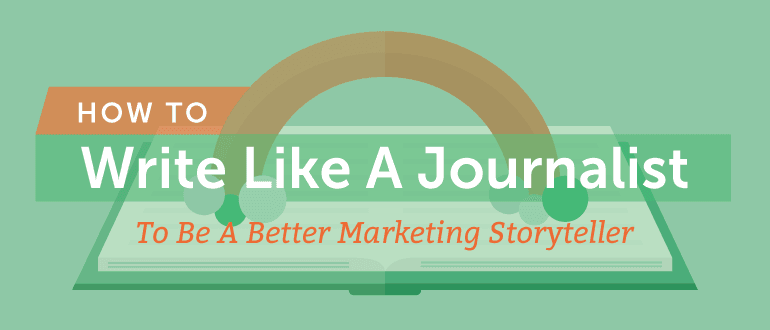 Storytelling has become a buzzword in content marketing circles.
That’s because smart marketers know customers connect with narratives that place them front and center, showing them how their life could be better using a product or service.
Crafting compelling stories isn't easy. This is especially true for marketers who don’t consider themselves writers by trade, but are required to write.
Fortunately, effectively infusing storytelling into content marketing isn't rocket science.
The trick is to apply tried and true writing and storytelling techniques that journalists have relied on for decades.
Whether you're writing a blog post, email newsletter, social media campaign, or video script, many of the same principles for narrative structure work for marketing content too. Borrowing those tactics can help you tell better stories that connect with readers (who may even become customers).
In this post, we’ll cover:
Storytelling has become a buzzword in content marketing circles.
That’s because smart marketers know customers connect with narratives that place them front and center, showing them how their life could be better using a product or service.
Crafting compelling stories isn't easy. This is especially true for marketers who don’t consider themselves writers by trade, but are required to write.
Fortunately, effectively infusing storytelling into content marketing isn't rocket science.
The trick is to apply tried and true writing and storytelling techniques that journalists have relied on for decades.
Whether you're writing a blog post, email newsletter, social media campaign, or video script, many of the same principles for narrative structure work for marketing content too. Borrowing those tactics can help you tell better stories that connect with readers (who may even become customers).
In this post, we’ll cover:
- How to formulate unique angles that hook reader interest.
- How to structure content with a clear narrative focus.
- How to adhere to basic writing best practices to keep your content crisp and clear.
Storytelling + PR Strategy = Success
Obviously as a reader of this blog post, you are interested in becoming a better marketer. CoSchedule has created Actionable Marketing Institute to help marketers learn crucial marketing skills.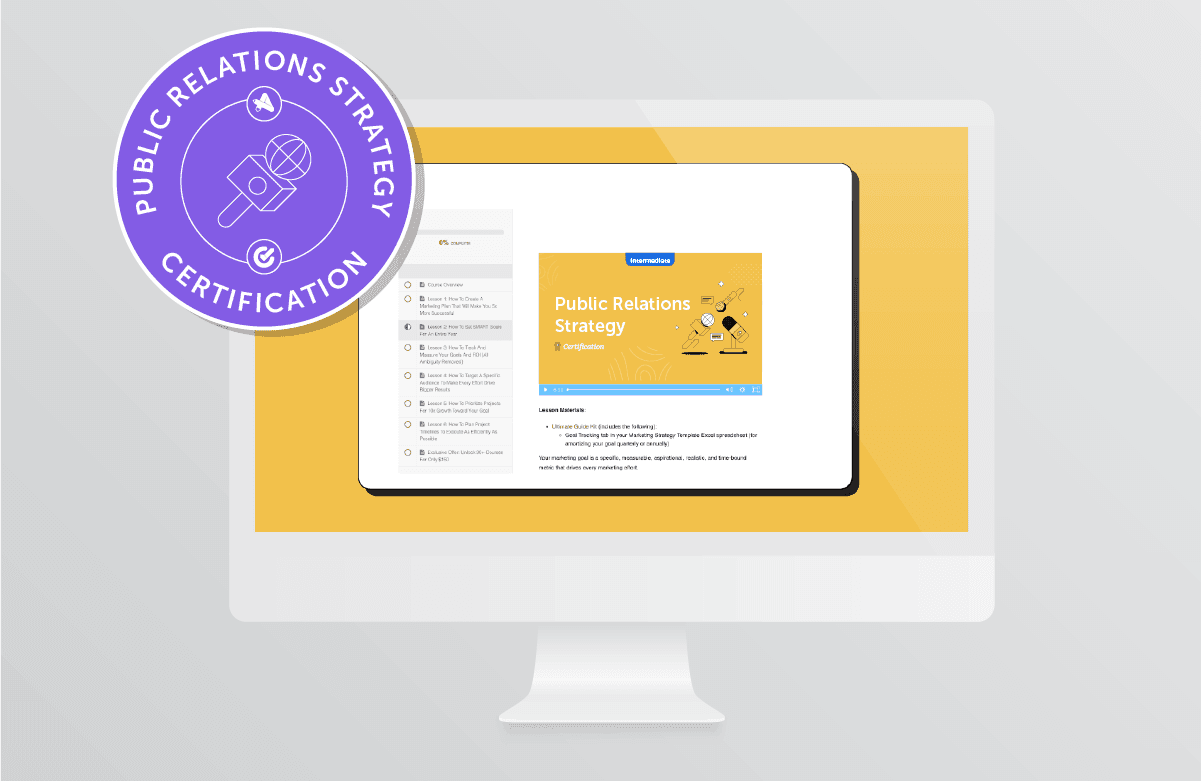 If you are looking for a way to implement your new found storytelling skills, AMI’s Public Relations Strategy Certification is full of ideas. This course has 12 lessons, 12 video tutorials, and 12 templates to help you understand PR and utilize a PR strategy filled with storytelling, data, and organization.
If you are looking for a way to implement your new found storytelling skills, AMI’s Public Relations Strategy Certification is full of ideas. This course has 12 lessons, 12 video tutorials, and 12 templates to help you understand PR and utilize a PR strategy filled with storytelling, data, and organization.
Download Your Writing Like A Journalist (For Content Marketers) Resource Kit
Apply what you learn in this post by downloading these three free resources below:- A blog post template to incorporate journalistic elements into your blog posts
- A Content Angle worksheet to help you narrow down the angle for every piece of long-form content you create.
- A 5 W's of Content Marketing desktop wallpaper to keep on your computer
Why Do Storytelling Skills Matter For Content Marketers?
No one buys features. Everyone buys benefits. People want to know how your product or service will make their life better. Stories show how products and services actually deliver real-world benefits. “Our [INSERT PRODUCT/SERVICE] provides [INSERT BENEFIT] by [INSERT UNIQUE FUNCTION]” is a time-tested copywriting formula. Features are only important if they directly deliver benefits. Great content needs more than this, though. You need to tell stories that help your audience visualize those benefits. They want to know how you're going to help them, help themselves.Stories show your audience how life could be better if they buy from you.
Click To Tweet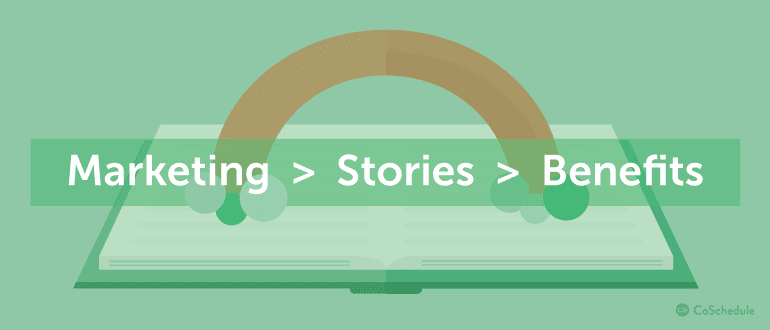 Your content needs to answer questions, solve problems, and make their life easier.
Storytelling is a powerful means of accomplishing these goals.
Your goal is to craft stories so compelling customers want to spend money on you.
Your content needs to answer questions, solve problems, and make their life easier.
Storytelling is a powerful means of accomplishing these goals.
Your goal is to craft stories so compelling customers want to spend money on you.
Craft stories so compelling customers want to spend their money on you.
Click To TweetStart By Finding An Angle For Your Content
“Man Bites Dog” is a classic example of a strong newspaper hook. Dogs frequently bite people. Flip the script, though, and suddenly you’ve got a story. It's a different twist on a familiar subject. You’re showing people something they haven’t seen before. In other words, you’ve found an angle.Every great story starts with an angle.
Click To TweetWhat Is An Angle?
In simplest terms, an angle is the main point of your content. There are a few components to formulating a strong angle, including:- A unique perspective. What can you show your audience about a topic that no one else has covered yet?
- A clear focus. Which specific details will your content cover?
- Relevancy to a target audience. What would make someone want to read or watch your content?
 The headline and subhead alone tell us a few different things about this story’s angle.
The headline and subhead alone tell us a few different things about this story’s angle.
- The internet is a problematic place to archive content.
- That’s because it’s easy to delete or forget about content.
- This is important because you don’t want to lose your favorite content because of neglect.
 The supporting details in this lede perfectly deliver on what the headline promised to deliver.
Together, they communicate a clear angle to readers: be careful not to lose content on the web.
The supporting details in this lede perfectly deliver on what the headline promised to deliver.
Together, they communicate a clear angle to readers: be careful not to lose content on the web.
Craft Better Content By Understanding The 5 W’s (Who, What, Where, When, Why)
The five W’s (Who, What, Where, When, and Why) are considered foundational elements for storytelling and information gathering. They're used to piece together important story elements to describe events. Everyone from journalists to crime scene investigators use them to help understand what happened in a given scenario. Content marketers can do the same. When determining your angle, ask the following questions:- What happened or will happen? It may be more useful for content marketers to think of this as, “What action do I want my audience to take?”
- Who made it happen? In other words, who is the subject or protagonist in your story?
- When did it happen? When did an event in your story take place? Or, when would your audience apply the information you’re providing?
- Where did it happen? What’s the setting for your content?
- Why did it happen? Or, what’s the purpose of what you’re communicating?
Can you name the 5 W's of journalism?
Click To Tweet8 Ways To Apply Journalistic Writing Best Practices To Your Content
News stories are constructed to be easily read and understood. Content writers have the same goal. This is especially true if you're writing how-to content.1. Structure Information In Logical Order Using The Inverted Pyramid
The Inverted Pyramid is a technique for structuring information by order of importance. It places the most important information first, followed by supporting details and other background details. It looks something like this: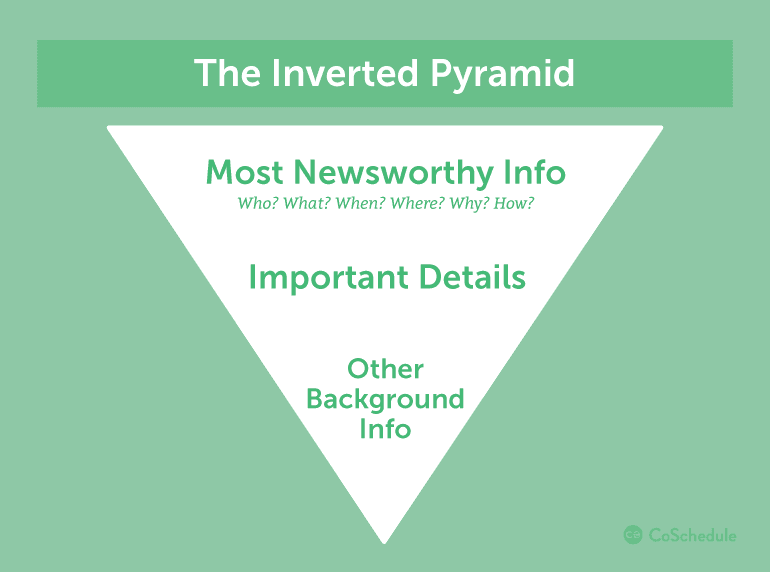 This time-tested template works because it gives your audience what they care about most right away.
It then leads them through the main details they want to know (even if they don’t consume an entire piece of content). This is especially important if your audience is pressed for time, so they can skim to find the information they need (even if they can’t read it all).
This time-tested template works because it gives your audience what they care about most right away.
It then leads them through the main details they want to know (even if they don’t consume an entire piece of content). This is especially important if your audience is pressed for time, so they can skim to find the information they need (even if they can’t read it all).
- The Inverted Pyramid puts the most important information first.
- It improves engagement by giving busy readers and viewers what they want right away.
2. Include Your Angle In Your Headline And Lede
This tip is important enough to bear repeating. Make sure your headline and lede clearly communicate your angle. This is important for getting people’s attention. Key Takeaways For Content Marketers:- Make sure your headline and introduction align with one another.
- Incorporating your angle into your headline and lede helps readers know what to expect from your content.
3. Use Concise Sentences
Journalists strive to use clear language most people can understand. Content marketers should too. Web readability best practices suggest keeping sentences under approximately 20 words (different studies report different findings, but this is close). Paragraphs are best kept to three sentences or less. This helps ensure content is easy to read and understand.
- Don’t be a show-off. Use simple language.
- If you’re creating web content, keep digital best practices in mind.
4. Get To The Point
Good journalism tells a complete story without wasted words. Your content should do the same. Be comprehensive and don’t leave out any important details. Only create as much content as you need to tell your story.Only create as much content as you need to tell your story.
Click To Tweet- Eliminate unnecessary words as much as possible.
- Create content that tells a complete story without going longer than necessary.
5. Incorporate Quotes And Outside Sources
Quotes from reputable sources are crucial for quality journalism. The same is true for authoritative content. Outside sources are essential for supporting our claims and proving the validity of our work.- External sources help establish the validity of your claims.
- Unless you’re the world’s greatest expert in your field, you will need outside sources.
Use quotes from trusted sources to make content more authoritative.
Click To Tweet6. Link To External Research
This point ties into the one above. Links are important for helping readers find where you found your information. They’re also crucial for search engine optimization. Plus, it’s a basic best practice to credit your sources.- Unless you’re presenting 100% original research, you’ll need to link to sources.
- External links help users find additional relevant information. This increases the value and usefulness of your content.
7. Avoid Excess Jargon
Journalistic content is meant to be easily understood. This means excessive jargon and technical language should be avoided. The exception to this are terms your audience is likely to understand. Use common sense. If you have to use an obscure word, explain what it means.- Avoid language your audience is unlikely to understand.
- If you need to use obscure terminology, explain its meaning for your audience.
- Remember that simpler wording is generally better.
8. Show, Don’t Tell
Telling your audience what to do is easy. Showing them how to do it is a bit more difficult. That’s probably why so much educational content fails. Your audience probably already knows what they need to do. What they likely need help with is being shown how to do it.Don't just tell readers what to do. Show them.
Click To Tweet- Break down complex processes into small steps.
- Use visual content to show how things are done.
- The best educational content is often actionable. Avoid telling your audience to do something without showing them how to do it.
How To Apply Journalistic Storytelling To Different Types Of Content
The tips outlined above have obvious applications for long-form written content. This could include blog posts, e-books, guides, and so forth. However, written content is all there is to journalism. It isn’t all content marketing is about, either.Content Type 1: Long-form Written Content (Blog Posts, eBooks, and Guides)
When it comes to applying journalistic writing techniques to content marketing, this is probably the most obvious place to start. Step 1: Start With Your Angle Everything you write starts with your angle. We’ve established how to generate an angle. However, what does an angle actually, well, look like? An easy way to visualize your angle is to write a one or two paragraph summary of what your content will be about. Think about it like this: “If I were writing a pitch email to an editor, why would they be interested in reading this post?” Basically, the aim is to sell yourself on your own idea. You might have to struggle with this a little bit until it clicks. Once you have that “aha!” moment, though, you know you’re ready to rock. Here at CoSchedule, we include a section in our blog post outlines titled WIIFM (What’s In It For Me). The idea is to determine why our blog post will be valuable to readers. We figure this out before we write a single word. This section includes a brief summary of our angle and the points we’ll cover. This is the actual WIIFM section I wrote in my outline for this blog post:Storytelling has become a buzzword in the content marketing industry. That’s because smart marketers know customers connect with narratives that place them front and center, showing them how their life could be better using a product or service. For marketers and copywriters used to writing to sell (rather than writing to tell), this may be a difficult pivot. This may be even more true for marketers who don’t consider themselves writers but are tasked with writing marketing materials. Fortunately, effectively infusing storytelling into marketing content doesn’t have to be rocket science. The trick is to apply writing and storytelling techniques that journalists have relied on for decades. Whether writing a blog post, email newsletter, social media campaign, or video script, keeping these principles in mind can help content marketers understand how to actually tell stories through their work and create content that connects with customers.You probably notice this sounds a lot like the introduction to this post. That’s because I clearly outlined the purpose of this post and what I wanted to talk about as the first step in my creative process. Take the time to get this right, and you’ll likely find this section of your outline can easily be worked into your finished content.
Hook reader's interest by immediately showing how your content benefits them.
Click To Tweet- A well-defined angle.
- A clear hierarchical structure that places your most important high-level information first.
- An idea of what you’ll instruct your readers to do (if creating educational content).
 You’ll notice this outline places the most important information first, summarizing what readers can expect right away. It then flows through a logical progression from start to finish. Supporting details that help round out the story are added at the end.
Step 3: Make Each Section Unique
Every paragraph should add new information to your story.
This is part of keeping your writing tight and concise within journalistic standards.
If you start repeating yourself, condense or eliminate duplicative sections. This will help make sure your content flows well as you work through your outline.
Step 4: Stick To Facts
Good journalists stick to the facts.
The same should be said for authoritative content. You have an agenda (whether that’s driving sales, establishing topical authority, or generating brand exposure). However, your reputation as an authority is contingent upon the accuracy of your information.
Don’t be self-promotional. Do tell the truth. It’s as simple as that.
You’ll notice this outline places the most important information first, summarizing what readers can expect right away. It then flows through a logical progression from start to finish. Supporting details that help round out the story are added at the end.
Step 3: Make Each Section Unique
Every paragraph should add new information to your story.
This is part of keeping your writing tight and concise within journalistic standards.
If you start repeating yourself, condense or eliminate duplicative sections. This will help make sure your content flows well as you work through your outline.
Step 4: Stick To Facts
Good journalists stick to the facts.
The same should be said for authoritative content. You have an agenda (whether that’s driving sales, establishing topical authority, or generating brand exposure). However, your reputation as an authority is contingent upon the accuracy of your information.
Don’t be self-promotional. Do tell the truth. It’s as simple as that.
Content Type 2: Email Newsletters
You might not think there’s a way to approach an email newsletter like a journalist. Much of what we’ve discussed in this post thus far is perfectly applicable here, though. Step 1: Determine Your Angle Newsletters need a hook just like any other content. This is true whether you’re writing a plain text email update or putting together a visually-driven e-blast. Why would someone be interested in what you have to say? If you can’t answer this, it’s time to go back to the drawing board before hitting “Send.”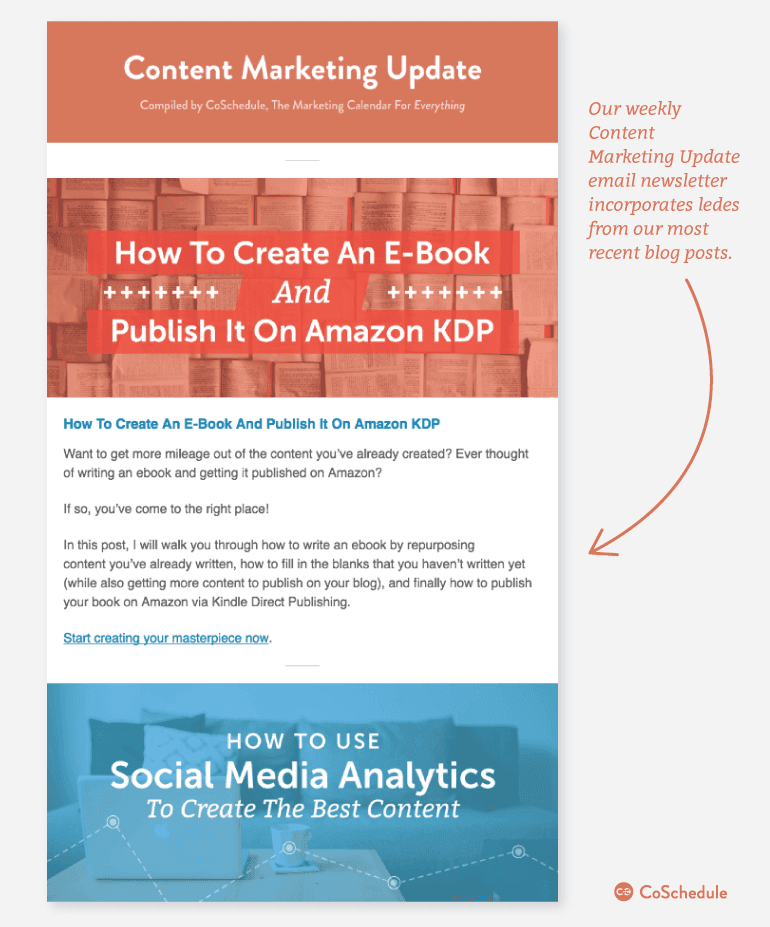 Step 2: Hook Your Angle Into Your Subject Line
Next, try working your angle into your subject line.
The trick is to distill the what and why of your email into five to seven words.
This isn’t easy, but it’s essential for telling a consistent story all the way through your email experience.
Step 3: Remember The 5 W’s When Writing Your Email
You may not need to include all five W’s. Here’s how to think of these within the context of an email newsletter:
Step 2: Hook Your Angle Into Your Subject Line
Next, try working your angle into your subject line.
The trick is to distill the what and why of your email into five to seven words.
This isn’t easy, but it’s essential for telling a consistent story all the way through your email experience.
Step 3: Remember The 5 W’s When Writing Your Email
You may not need to include all five W’s. Here’s how to think of these within the context of an email newsletter:
- Who am I writing this for?
- Why do they want to read it?
- What will they gain from it?
- When will it be useful for them?
- How will it help them accomplish their goals?
 Here, you’ll see he’s accomplished each of the following:
Here, you’ll see he’s accomplished each of the following:
- He immediately demonstrates that he knows who is in his audience (re: committed bass players). Using the term “bassman” in his first sentence alludes to the classic Fender Bassman amplifiers (a small detail astute readers might pick up on).
- He tells us who his subject is (Ed Friedland), where he was educated (Berklee College of Music), how he developed his expertise, and why this podcast episode will be interesting to bass players. It also includes a call-to-action directing recipients to where they can listen.
Content Type 3: Video
Video content typically starts with an idea and a script. If the aim of your video is to tell a compelling story, then follow these tips. Tip 1: Determine What Differentiates Your Video Idea An incredible amount of video content gets uploaded every day. How will you make sure yours stands out? Start by determining what differentiates your idea from existing content on your topic. Tip 2: Integrate The 5 W’s Into Your Script You might not need to include each one. Keeping them in mind, however, can help provide consistent narrative structure. Let’s say you’re shooting a basic company video. Your script could be structured like this:- When did we start our company?
- Why did we go into business?
- What do we do for our customers?
- Who works for us?
- How do we strive to accomplish our mission?
- Their purpose for going into business (why).
- The problems they solve (what).
- The people they serve and the people who work for them (who).
- The places they do business (where).
Content Type 4: Social Media
Writing best practices for social media are often overlooked. However, many major news organizations do this extremely well. Rather than break this section down into steps, we’ll focus on some specific tips and examples. Tip 1: Let Your Image And Headline Tell Most Of The Story When it comes to social media posts, sometimes less is more. You don’t always have to use words to tell your entire story. Instead, use post copy to complement images, link descriptions, and other post elements. Here’s a great example from TIME’s Facebook page: The post copy ties into the headline, while the link description adds an important supporting detail. It tells a complete story, even if you don’t read the full article.
This same approach works well on other networks too. Here’s another example from Vox Creative:
The post copy ties into the headline, while the link description adds an important supporting detail. It tells a complete story, even if you don’t read the full article.
This same approach works well on other networks too. Here’s another example from Vox Creative:
Together, the post copy and image tell a complete story while building interest in reading the full article. Even if you don’t click through, though, you still have a solid understanding of what it’s about. Tip 2: Use Live Video To Cover Events In Real-Time Have you ever wanted to feel like a TV news reporter? Thanks to tools like Facebook Live and Periscope, you can! These new platforms make it easy to broadcast live from events. This can be useful for several different purposes, including:Eli Thomas moved to LA with Hollywood in mind. He found his community instead: https://t.co/2iJKhsv6AF From our partner @Reebok #ZPRINT
— Vox Creative (@VoxSponsored) May 10, 2016
- Showing your brand’s presence at a conference.
- Giving followers a glimpse into your day-to-day operations.
- Broadcasting events you’re hosting for folks who can’t make it in person.
- An introductory post establishing the context for your contest.
- Multiple promotional posts building up to the entry deadline.
- Posts promoting your contest winners.
Creating stories on social media? Check out @Storify.
Click To TweetChannel Your Inner Journalist And Create Better Content
You should now have a solid grasp on basic journalistic storytelling technique. We’ve covered a lot of ground, though. Let’s recap what we’ve learned.- You should now understand how to apply the 5 W’s to create logical story structures that provide clear context for your content.
- We also covered how to formulate a strong angle.
- Finally, we touched on how to apply these concepts to different types of content.
Here's how to be a better content marketer by thinking like a journalist
Click To TweetGet The Tools To Create A Successful Public Relations Strategy
Enroll in Actionable Marketing Institute’s Public Relations Strategy Certification to get the tools to create a robust public relations strategy driven by results. Unlock 12 video tutorials and 12 templates to help you create a customized strategy perfect for you and your business. Learn more.